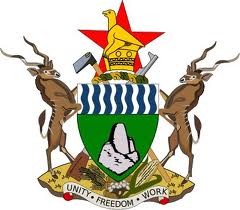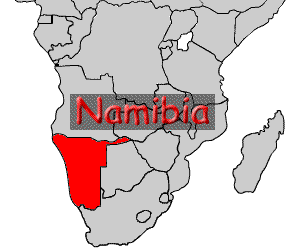 Zimbabwe Economic Overview
Zimbabwe Economic Overview
The Zimbabwean economy is on a recovery path following a decade long crisis that saw economic output decline every single year during the period 1999 to 2008 mainly because of the debilitating economic sanctions imposed on the country. In 2010, the Gross Domestic product (GDP) grew by 7.5% following a 5.7% growth in 2009.
The agricultural and mining sectors are at the forefront of recovery with manufacturing and services also registering some growth. The Agricultural sector grew by 15% in 2009 and by 34% in 2010. Smallholder maize production jumped from 0.57 million tonnes in 2007/08 season to 1,35 million tonnes in the 2009/2010 season. Tobacco production more than doubled in the last two years. A total of 123.5 million kgs of tobacco were sold at an average price of US$2.88/kg in 2010 compared to 58.6 million kgs the previous year. Tobacco production in 2011 was 132 million kgs.
In the mining sector, output grew by 8.5% in 2009 and by 47% in 2010. The major gains in mining are against the background of firm international commodity prices. Increasing confidence in the sector has also benefited investment in expansion programmes and recapitalization of mining operations. There was increased output of gold, platinum, chrome and diamonds. Gold output in 2011 was projected to reach 13 000 kgs. Diamond production in 2010 was about 3 million carats and was expected to increase to 4 million carats in 2011.
Growth in manufacturing has however been sluggish at 2.7% in 2010. The sector is heavily undercapitalized and there is need for refurbishment of equipment. It is Government’s intention to increase capacity utilization in the sector from the current 57% to 100% and thus increase the sector’s contribution to GDP from the current 15% to 30%.
Zimbabwe is a unique and fascinating holiday destination with a landscape of extraordinary beauty, rich and diverse wildlife. The best known and the biggest tourist attraction is the mighty Victoria Falls, which is one of the Seven Wonders of the World. Other sights include the Great Zimbabwe Ruins, balancing rocks of Matopos, Eastern Highlands, Kariba dam, Chinhoyi caves and an array of National Parks. Tourist arrivals went up to 2.2 million in 2010 from 2 million in 2009. About 2.5 million tourists were expected in the country in 2011.
Year on year inflation in 2010 remained in single digit, with a maximum of 6.1% recorded in May. From June 2010, inflation took a generally downward trend, registering 3.6% in October. Overall inflation was contained within single digit levels ending the year 2011at 4.5%.
Investment Opportunities
Investment opportunities exist in the main economic sectors of agriculture, mining, manufacturing and tourism.
Agriculture
Historically, agriculture has been the engine of the economy. The main crops produced in the country include maize, tobacco, sugar, tea, coffee, cotton, fruits and vegetables. Some of these outputs are used as primary raw materials to the manufacturing sector which takes more than 60%. Opportunities in the sector exist in;
- Tobacco processing
- Timber felling and processing
- Sugar milling
- Value addition to all the products
Mining
Zimbabwe is a mineral rich country with great potential for further discoveries. The country is richly endowed with a wide range of mineral resources that include coal, gold, platinum, diamonds, chromium ore, iron ore, copper, vanadium and lithium. The country also boasts of the largest known reserves of coal bed methane gas in the sub – Saharan Africa. Opportunities exist in mining and adding value to these minerals.
Manufacturing
Many opportunities exist in this sector and they include;
- Fertilizer production
- Manufacture of agricultural equipment
- Manufacture of chemical and petroleum products
- Manufacture of newsprint
- Manufacture of steel products using output from the country’s largest steel producer – Zisco Steel
- Textile manufacturing
- Glass manufacturing
- Pharmaceuticals
Tourism
Zimbabwe, a world of wonders, is rated highly by foreign visitors as a preferred tourist destination. Tourism continues to be one of the most exciting industries in Zimbabwe with great potential to earn a significant amount of foreign currency for the country. Investment opportunities in the sector exist in;
- The building of hotels, lodges, and chalets around the various tourist sites
- Safari
- Tour operations
- Provision of transport infrastructure and other services to support the sector
Zimbabwe Investment Authority (ZIA)
The Zimbabwe Investment Authority was transformed into a One Stop Shop Investment Centre in December 2010 to facilitate easier promotion of investments in the country. ZIA can be contacted on;
Zimbabwe Investment Authority
109 Rotten Row
P.O.Box 5950
Harare – Zimbabwe
Tel. 263 4 757931- 5; 759911 – 5
Fax 263 4 773843; 759917
E-mail info@zia.co.zw
Indigenisation and Economic Empowerment
The Zimbabwean Government in 2010 came up with Indigenisation and Empowerment Regulations that require all foreign owned companies to dispose of at least 51% shareholding to indigenous people. This is to ensure that the majority of Zimbabweans are integrated into the mainstream economy so that they become major drivers and beneficiaries of the economic activities of the country.
Zimbabwe is not the only country with legislation for promoting participation by the indigenous majority. Most countries in SADC and elsewhere have similar legislation.






